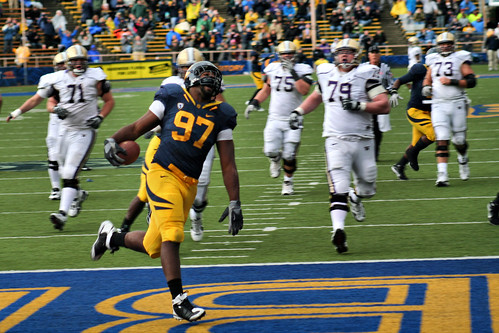Heal Your Angry Brain: Part 1 of 5
by Gina Simmons, Ph.D.
Part I: Anger and Motivation
Nothing like anger to energize and motivate. Everyone from the high school football coach to a police officer knows that a healthy dose of anger can push a kid to a touchdown, or help a cop run those five blocks to catch the bad guy. Some professional athletes, like boxers and basketball players, will try to get pumped up with anger before an event. Anger and feelings of inferiority often frame the background of a competitive CEO or a movie star. That feeling, “I’ll show them”, motivates many people to achieve great things. We fear the destructive effects of anger, (violence, health problems, ruined relationships), but may not fully appreciate anger’s power to motivate.
Brain researchers found that positive emotions like joy, interest and pleasure are associated with increased activity in the left prefrontal cortex of the brain. Interestingly researchers looking at anger found that anger, (considered a negative emotion), also triggers increased activity in the left prefrontal cortex. This puts a wrinkle in the neat framing of; positive emotions/ left prefrontal cortex; negative emotions/right prefrontal cortex model. If anger is so negative, what’s it doing messing around with all these positive emotions on the left side of the brain?
Dr. Eddie Harmon-Jones, professor of psychology at Texas A & M, worked on a series of studies over the last few years to figure out what’s really happening in the brain during positive or negative emotional states. Researchers have long known that positive emotions, like excitement, motivate us to move toward something (approach motivation), while negative emotional states, like fear, motivate us to move away (avoidance motivation). When they discovered the left/right prefrontal cortex connection it began to look like we could help unhappy people by just stimulating the left prefrontal cortex. Brain researchers keep discovering that nothing neurological is that simple. When students were made angry in a lab, they showed increased activity in the left prefrontal cortex. Harmon-Jones and his colleagues determined that the left prefrontal cortex is associated with feeling motivated to act (approach motivation) while the right prefrontal cortex controls feelings that motivate us to retreat (avoidance motivation). Anger often motivates us to move toward the object of our anger, like when you smash your palm against the vending machine that took your money and didn’t give you any candy.
In another study, Harmon-Jones and colleagues found that anger, and the positive emotion of determination, look very similar to the average person. Sometimes the expression of anger cannot be distinguished from the expression of determination. Think of the look on the face of that running back heading for the goal line. Or what about the look of determination on the face of a teenager confronting a teacher over an unfair grade?

Determination drives us to accomplish a goal. If directed toward something positive, it can lead to exceptional achievements. When we work with clients in our Manage Anger Daily classes, they describe regret about their aggressive behavior while angry. Most got into trouble at work or at home by attempting to control the behavior of others. When you try to get others to change, you use that approach motivation triggered by the left prefrontal cortex. This leads to physical or emotional aggression that damages relationships. When you focus on controlling your own behavior, like lowering your arousal, you usually get better results.
How to Lower Your Arousal
Expressions like “calm down, cool your jets, don’t get overheated” express the need others feel to lower the arousal level of an angry individual. When anger gets triggered the heart rate increases, stomach muscles tighten, digestion slows, sugar gets released into the bloodstream for energy and the body looks overheated. That arousal can stop our mind from thinking about creative solutions and instead focuses us on the object of our wrath. To lower that arousal try:
- Deep, slow breathing: It’s a cliche in anger management that all you have to do is breathe and it will all go away. This ticks off a lot of anger management clients. “Don’t tell me how to breathe, I’ve been doing it all my life”, they say. If you start with deep, slow, diaphragmatic breathing, you send a message to your brain that it doesn’t have to keep pumping all this cortisol to keep you worked up. Deep breathing doesn’t fix anything, it’s just a start.
- Take a walk: If your anger gets triggered at work, walk to the restroom to splash some water on your face. Walking allows you time to think, increases circulation of blood to the brain to help you think straight, and can calm you down.
- Constructive self-talk: If you say to yourself, “I can handle this”, or “I will calm down first then figure out what to do about this”, you will likely achieve a better outcome. When you say to yourself, “I’m sick of this”, or “I can’t take this any more”, you’re likely to behave destructively and regret your behavior later.
From Anger To Determination
When you lower your arousal enough to think clearly, you can make room for the idea of a goal. Ask yourself, “What do I want to accomplish in this situation?” Once you define a goal like, “I want to negotiate with my boss to get a reduced work load”, then you’re more likely to get something you want. If you explode in anger at your boss for giving you too much work, he/she won’t feel very eager to give you what you want. Turn that anger into determination. Rehearse what you want to say. Put that anger motivation to good use. You might just get that touchdown.

Photos courtesy of shockadelic , @edharrison and Monica’s Dad.

[…] Manage Anger Daily: Heal Your Angry Brain American Psychological Association on Anger […]